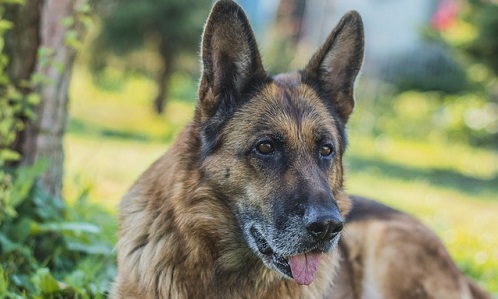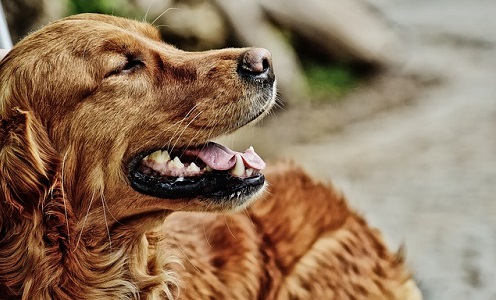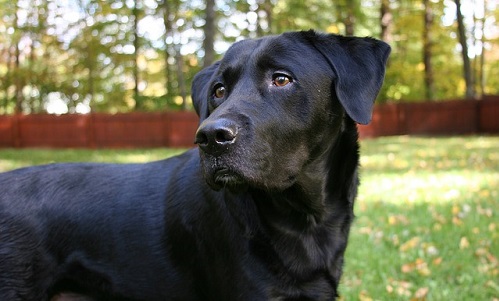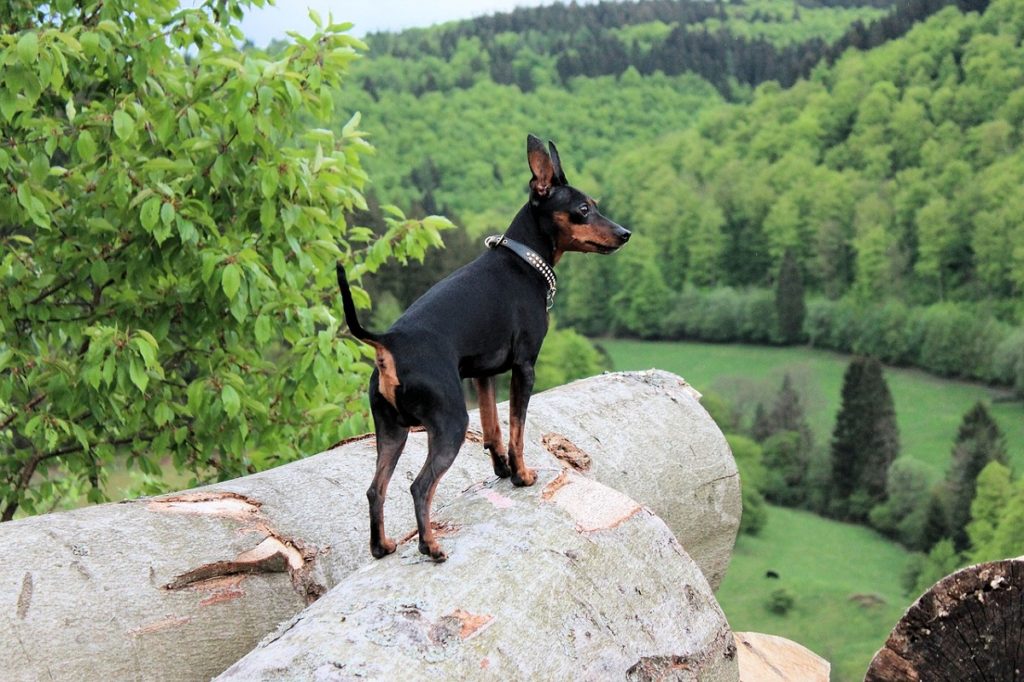When a person comes into contact with poison ivy, they know it without a doubt. But does the same go for dogs? Can dogs get poison ivy like their human counterparts?
Surprisingly, most dogs feel little to no irritation when they are exposed. However, some dogs can suffer a great deal after coming into contact with the plant’s oils, especially if they get on a dog’s skin.
Thankfully, those rare occasions when a dog with poison ivy has a reaction is typically limited in scope. For example, dogs with sensitive skin can be vulnerable – therefore, it’s is always best to usher them around any poison ivy, poison oak or poison sumac. If your canine companion romps through any of these plants by accident and fails to exhibit symptoms (such as a dog skin rash or is scratching more than usual), a bath can help fend off any potential irritation. Dogs that do have a reaction will benefit from a little more help or a visit to the vet, as explained later on in this article.
Dogs and puppies who enjoy eating everything or frequently nose around in the brush are at risk, too. If a dog ingests a portion of a poison ivy, oak or sumac plant, the animal can experience an upset stomach. However, a severe canine allergic reaction could occur and cause the dog to go into anaphylactic shock – due to constricted airways, they may have difficulty breathing. While this type of allergic reaction is rare, it’s best to keep an eye on dogs that have ingested any of these poisonous plants, and call the vet at the first signs of respiratory distress.
Oddly enough, it is dog owners who are most at risk of suffering the pain of poison ivy exposure after their dog strolls through a patch of poison ivy, poison oak or poison sumac. Oils from the plants, known as urushiol, can easily cling to a dog’s fur. From the fur, the urushiol can easily be transmitted to a dog owner via:
- their paws touching the owner’s skin
- the dog owner petting the dog
- the dog rubbing his fur up against his owner’s bare leg or arm
What Is Poison Ivy?
If you are one of the lucky folks who has never had to suffer the rash, itching, and general scratching misery that results from an encounter with poison ivy, congratulations! If you have been there (and done that), you probably want to forget it ever even happened.
 In either case, this article contains what you need to know to continue avoiding it yourself, as well as how to keep clear of it while you’re on walks with your dog. Many people think poison ivy, poison oak and poison sumac are encountered only when walking in wooded or marshy areas, which provide an excellent habitat for the noxious plants. However, it’s important to be aware that you can stumble across these poisonous plants in local parks, backyards and other unsuspecting places your dog wants to lead you – so always be on the lookout.
In either case, this article contains what you need to know to continue avoiding it yourself, as well as how to keep clear of it while you’re on walks with your dog. Many people think poison ivy, poison oak and poison sumac are encountered only when walking in wooded or marshy areas, which provide an excellent habitat for the noxious plants. However, it’s important to be aware that you can stumble across these poisonous plants in local parks, backyards and other unsuspecting places your dog wants to lead you – so always be on the lookout.
While a brush with poison ivy is truly unpleasant, as mentioned above, it’s not the only plant in the wilderness dubbed “poison” – in fact, poison ivy has a few close relatives, more commonly known as poison oak and poison sumac. In total, there are two species of poison ivy and poison oak, and one kind of poison sumac. All of these plants grow in similar habitats across the United States and Canada. This map provides a good illustration of which plants grow where in the United States.
Whereas poison ivy and poison oak present themselves as vines or shrubs, poison sumac looks more like a shrub or a tree. Please consult the poisonivy.org website to learn more about all three plants, as well as how to recognize them in the wild to avoid the unpleasant side-effects of an encounter. If you can learn how to identify these plants before you and your dog find yourself amongst them, it will be because you know what they look like (and how to tell them apart), thus saving you from the grief, discomfort and inconvenience of a plant-related reaction. Be aware, it does take some time and a carefully-trained eye to identify them correctly; this is primarily due to the fact that each plant appears differently throughout the year. For example, poison ivy spouts yellow-green flowers in the spring, and it can grow tiny green berries that turn a creamy white color in the fall.
Did You Know…
But…Are They Actually Poisonous? Despite their dangerous names, all three plants – poison ivy, poison oak and poison sumac –are not actually “poisonous.” Instead, each has a layer of sticky urushiol oil as we’ve outlined earlier, which causes the rash and irritation to exposed skin. Unfortunately, neither you nor your dog need to come into contact with a great deal of urushiol to suffer the consequences. Therefore, knowing how to identify all poison ivy, oak and sumac plants is your best defense to keep you and your dog away from it in the first place. Some of us have been taught to stay away from plants with three leaf-clusters. While poison ivy fits that bill, the other two do not look the same. See this myth buster photo to get a good look at all three plants.
It’s Not The Breed, It’s Fur
Do you have a dog that never stops shedding? The good news is that the furrier your dog is, the more natural protection he has from poison ivy, oak or sumac. Fluffy, thick fur protects a dog’s skin from coming into contact with the plant’s oils. The same cannot be said for small dogs, as well as dogs that have less fur on their bodies and stomachs. Dogs that spend a lot of time in heavily wooded areas where poisonous plants are abundant are more likely to have an allergic reaction to them, because their skin is more exposed to urushiol as they walk through the plants.
What Happens If My Dog Is Exposed To Poison Ivy?
If your dog has gotten into some of these oily plants and appears to be scratching more than usual, check for raised bumps and redness of their skin. Areas that are especially susceptible include the groin, external genitalia, muzzle and armpits, and any other area that has less fur and more skin exposed.
If there is oil on your dog’s skin, the impacted area will begin to release histamine to battle the effects of the oil. As with most itchy rashes, the bumps may start to blister and ooze a clear fluid. Once the skin is broken, this introduces the opportunity for canine bacterial infections to enter the picture. Unfortunately, open blisters only lead to more itching and scratching, which exacerbates an already miserable situation.
For some dogs, mild discomfort can escalate to severe discomfort. If their condition is left untreated or unnoticed until it is too late, the signs that your dog is more than just a little bit miserable include a high fever of 103°F or more, lethargy, depression and loss of appetite.
If your dog is experiencing a reaction to poison ivy, oak or sumac, call your veterinarian right away to determine the next best steps to take. Your vet may recommend specific OTC histamine-blocker treatments that are best for your dog’s size, such as Benadryl or Claritin. The vet also can recommend or prescribe products that can be applied topically, such as antihistamines or steroid salves.
Canine Poison Ivy: When In Doubt, Take A Bath
In the instance where you’ve been able to catch things before they escalate – or you know for sure that your dog was exposed to poison ivy, oak or sumac but isn’t yet exhibiting any rash or irritation – you can take a simple step to prevent any escalation by giving him a bath.
 It’s best to use cool to lukewarm-temperature water and a shampoo that breaks up the oil; your vet or a pet store chain associate can recommend one that’s appropriate for the task. The sooner you bathe your dog, the better. However, be certain to wear waterproof gloves and long sleeves/pants to avoid skin exposure to the oil yourself. Also, be sure to immediately wash any towels or rags you use to dry off your dog in very hot water.
It’s best to use cool to lukewarm-temperature water and a shampoo that breaks up the oil; your vet or a pet store chain associate can recommend one that’s appropriate for the task. The sooner you bathe your dog, the better. However, be certain to wear waterproof gloves and long sleeves/pants to avoid skin exposure to the oil yourself. Also, be sure to immediately wash any towels or rags you use to dry off your dog in very hot water.
To ensure the bath did the trick, carefully monitor your dog for up to a week from the exposure to ascertain that no rashes develop or spread to other parts of the body. Remember, the oil is like all oil products – difficult to get rid of completely.
Bath Tips
As we’ve discussed, getting rid of the oil isn’t easy, and you need to do it without exposing yourself to it. Therefore, follow these tips for your best chance of success:
- Wear Rubber Gloves
- Cover up elsewhere with a barrier skin cream containing bentoquatum
- Use lots of cool water for a long period of time
- Counteract the urushiol oil with degreasing soaps such as Dawn dishwashing detergent or oatmeal-based shampoo
- Do not rub your eyes. Do you have goggles or glasses you can see through clearly? Use them.
Poison Ivy & Your Dog: Measures For Prevention
In the case of poison ivy and your four-legged friend, not jumping to any conclusions is important. This holds especially true, because skin irritations and dogs go paw-in-paw. So, if you are not reasonably sure that your dog got into some poisonous plants or is suffering that specific kind of rash, it may be wise to call your vet for a definitive diagnosis.
There are all kinds of things that can cause your dog’s skin to flare up – dry skin, fleas or other kinds of allergic reactions could be the underlying culprit. Your vet will be able to discern the true cause of your dog’s skin irritation if there is any doubt in your mind whether or not he was exposed to poisonous plant oils. In addition, a veterinarian can also test your dog for specific skin allergies to help you gauge the degree of outdoor time spent at beaches, yards, parks and other outdoor areas where there is poison ivy, oak and sumac lurk.
Helpful Hints: How To Avoid Poison Ivy
As is typically the case, not getting poison ivy, oak or sumac in the first place is the best action a dog owner can take, for everyone’s sake; however, it’s realistically not always possible to avoid exposure. If you know that the area you’re going to has these plants underfoot, one thing you can do is put your dog in a t-shirt or a washable outfit that will protect your pet from getting urushiol oil on his skin. You can also talk with your vet about giving your dog antihistamines as a preventative measure. The good news about using antihistamines ahead of time: if your dog is exposed to any oils, subsequent doses will be more effective in alleviating any symptoms that may result.
Getting Rid Of Canine Poison Ivy
 If poison ivy threatens you or your dog from enjoying space that is on your land, or land that people with dogs use frequently, you might want to attempt to get rid of it. However, doing so is not easy – and is not without risk or cost. Therefore, calling a local firm that specializes in its removal might be the best idea. If you want to do it yourself, be careful and follow expert’s advice from your local agricultural extension office. Also understand it will take you more than one or two attempts to eliminate it entirely.
If poison ivy threatens you or your dog from enjoying space that is on your land, or land that people with dogs use frequently, you might want to attempt to get rid of it. However, doing so is not easy – and is not without risk or cost. Therefore, calling a local firm that specializes in its removal might be the best idea. If you want to do it yourself, be careful and follow expert’s advice from your local agricultural extension office. Also understand it will take you more than one or two attempts to eliminate it entirely.
Here’s a look at some of the things that are involved in the process of eradicating poison ivy:
- Identify the plants that you want to dispose of correctly: Clearing plants that are friendly just leave more room for the poisonous plants.
- Dress properly: Because you’ll be in the thick of plants covered in urushiol oil, be sure to cover up any and all exposed skin with appropriate clothing to completely protect your extremities. Tuck your pants into rubber boots that you can hose off later. Pick a day that is the right temperature so you can remain suited up the entire time you are out in the yard.
- Wear goggles: Always shield your eyes and wear protective eye gear, which may include either plastic goggles (preferably) or reading glasses/sunglasses. Never, ever rub your eyes when attempting to eradicate poison ivy, oak or sumac. Goggles act as a protective layer, making it harder for hand-to-eye accidents while protecting you from stray oil.
- Wear a breathing mask: Avoid inhalation and wear a properly-fitting breathing mask – you don’t want to breathe in poisonous plant oil/vapors or any herbicide sprays you might use into your lungs.
- Work when the weather is good: Perform the task at hand on a dry day with little to no wind; otherwise, it may result in more harm than good.
- Prep your area: Prune or cut the plants to the ground, or dig out the roots, if possible – never rip out the root system. Next, place all debris and foliage in heavy trash bags. Tie them up securely and put them in a carefully sealed trash receptacle. Do not burn anything, as toxins will be released into the atmosphere.
- Treat the affected area: Use an herbicide (recommended by your local agricultural office) on any remaining poison ivy foliage. Be careful to keep it off of any plants you do not wish to kill.
Although exposure to poison ivy is not a death sentence for your dog, it can still bring some uncomfortable side effects that should be avoided at all costs. As long as you take preventative measures and keep a watchful eye on your dog’s environment, you will be able to protect him and keep him safe from the painful effects of poisonous plants.
Sources:
- Lotz, Kristina. “Can Dogs Get Poison Ivy?” AKC.org, July 06, 2018, https://www.akc.org/expert-advice/health/can-dogs-get-poison-ivy/. Accessed October 23, 2018.
- “Poison Ivy and Other Plants: What You Should Know.” WebMD.com, medically reviewed November 11, 2016, https://www.webmd.com/allergies/ss/slideshow-poison-plants. Accessed October 24, 2018.
- “Poison Ivy Poison Oak Poison Sumac: Information about poison ivy, oak, sumac and the skin rashes they cause.” Poison Ivy.org, (no publish date), https://www.poison-ivy.org/. Accessed October 24, 2018.




